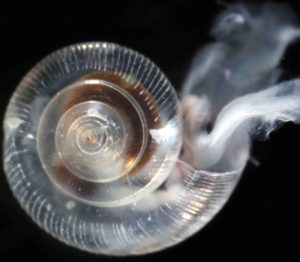OAH modeling stakeholders helping SCCWRP prioritize expert panel’s recommendations

A stakeholder steering committee that oversaw an independent expert review of a suite of coastal ocean acidification and hypoxia (OAH) modeling tools has begun deliberating about how best to implement recommendations developed through the review process for enhancing the tools’ management utility – a community-building initiative that is designed to improve stakeholder confidence and understanding of the modeling tools’ predictive capabilities.
In April, the steering committee – which is comprised of water-quality regulatory agencies, the regulated community and environmental advocacy groups – met to prioritize among the expert panel’s 40 recommendations, which represent millions of dollars of investments in modeling science.
This consensus-building work is critical as coastal ocean managers weigh how much confidence to place in the OAH modeling tools and decide if and how to use the tools as a basis for taking management actions.
The modeling tools, which were developed by a research team that includes SCCWRP, are designed to predict how natural oceanic sources of nutrients and local nutrient discharges influence coastal OAH conditions and ecosystem health.
The independent expert panel that reviewed the OAH modeling tools concluded its work last November, finding that the modeling tools are built on fundamentally sound science and offering 40 recommendations to continue building on this work, including quantifying modeling uncertainty, making the modeling outputs and other work more accessible to a broad community of end users, and adapting the modeling tools for use at scales relevant to coastal discharge processes for wastewater.
The same stakeholder committee that formed this expert panel and oversaw its deliberations is now tasked with coming to agreement on which recommendations to fund and when, as well as how costs of implementing the recommendations should be shared among stakeholders.
In a parallel effort, the SCCWRP Commission’s Technical Advisory Group (CTAG) has established a CTAG modeling subcommittee tasked with providing technical review of all of the OAH modeling team’s work, including projects prioritized by the steering committee.
In February, SCCWRP and CTAG subcommittee began developing a quality assurance project plan (QAPP) that is intended to enhance transparency and stakeholder understanding of how the modeling tools are being used. The QAPP is expected to be completed in late 2025.
The CTAG subcommittee also is helping to tailor modeling scenario runs to generate the predictive insights that managers need, as well as exploring how to develop data visualization products that will make modeling predictions more transparent and accessible to stakeholders.
Finally, the CTAG subcommittee is setting expectations about the levels and types of technical scrutiny that the modeling tools should be subjected to – an effort that will pave the way for managers to develop comprehensive understanding of the strengths and limitations of the modeling tools’ predictive capabilities.
OAH is a global phenomenon in which seawater is moving to an incrementally more acidic state, and dissolved oxygen levels are falling to create hypoxic conditions for marine life. Given that the West Coast is uniquely vulnerable to OAH due to ocean circulation patterns, the modeling tools are designed to predict whether elevated levels of local, land-based nutrient discharges from dense population centers along the coastline are exacerbating local OAH conditions.
The OAH modeling tools consist of an coastal ocean water-quality model that is made up of two component models – collectively known as ROMS-BEC (Regional Ocean Modeling System-Biogeochemical Elemental Cycling) – that work in tandem to predict the relative influence of natural oceanic sources of nutrients vs. local nutrient discharges on seawater chemistry in coastal ecosystems. An associated set of biological modeling tools, meanwhile, translates how ROMS-BEC’s predictions about changing ocean chemistry will adversely affect the health of marine life that are sensitive to these changes.
For more information, contact Dr. Martha Sutula.
More news related to: Climate Change, Ocean Acidification and Hypoxia, Top News